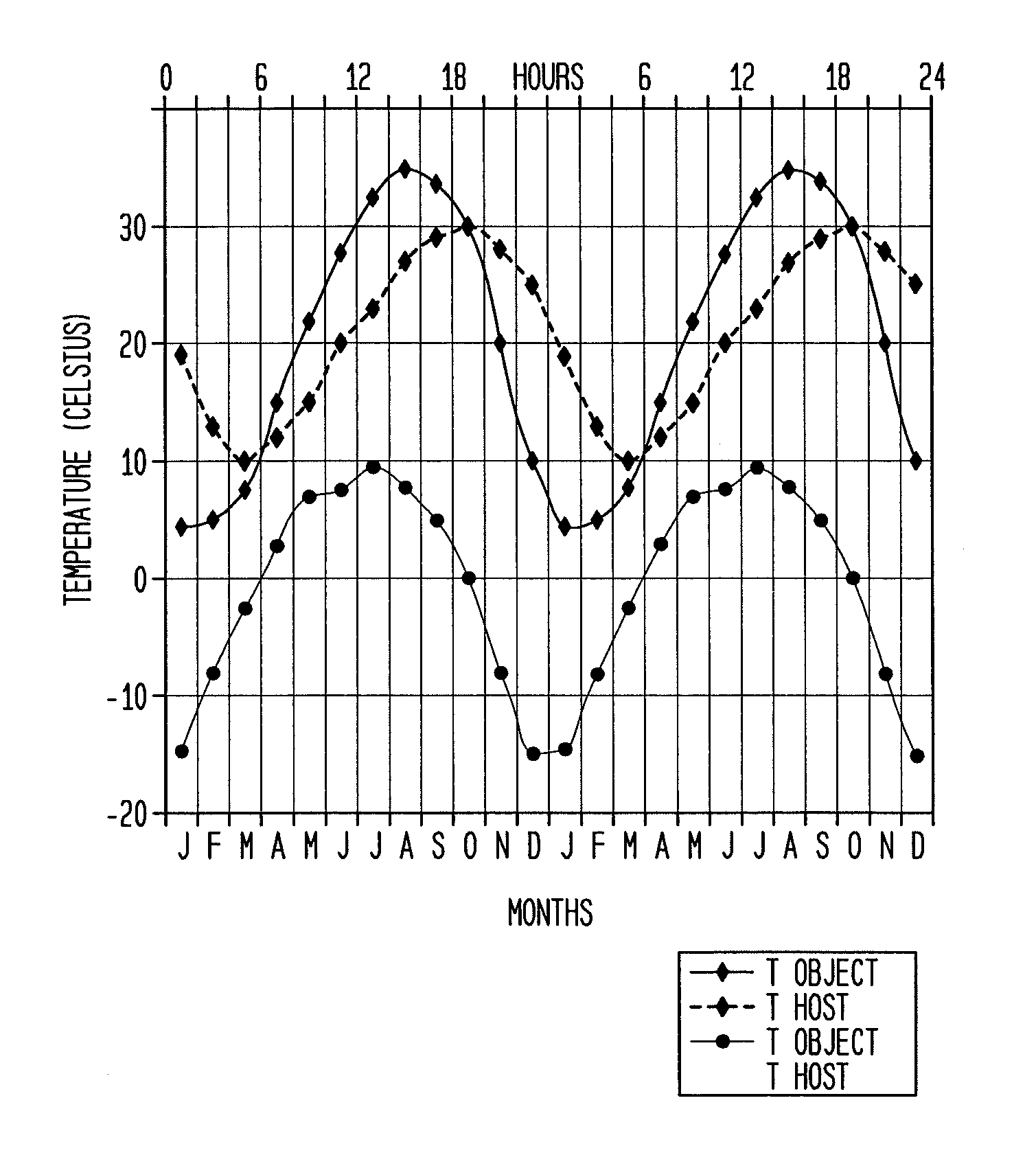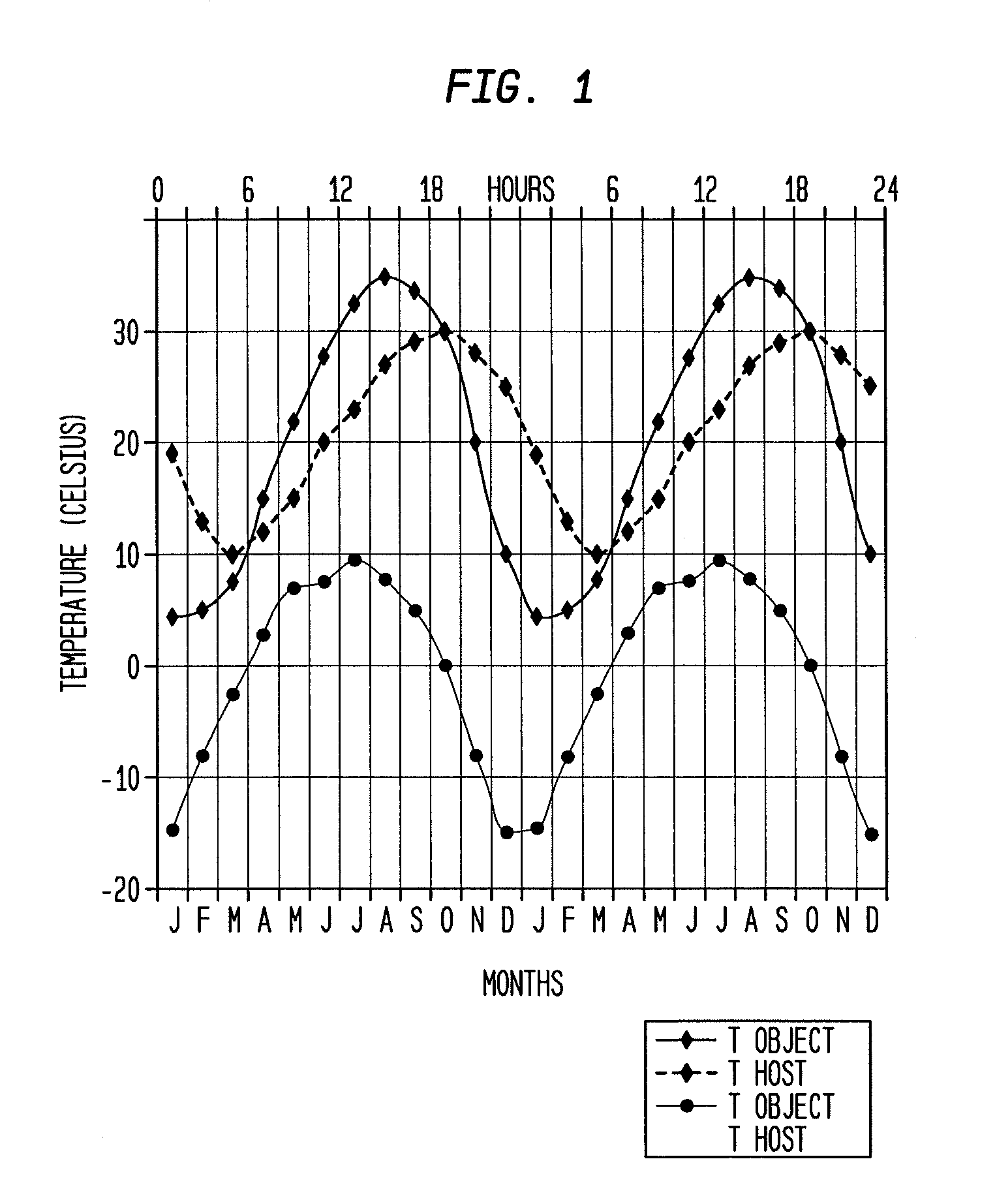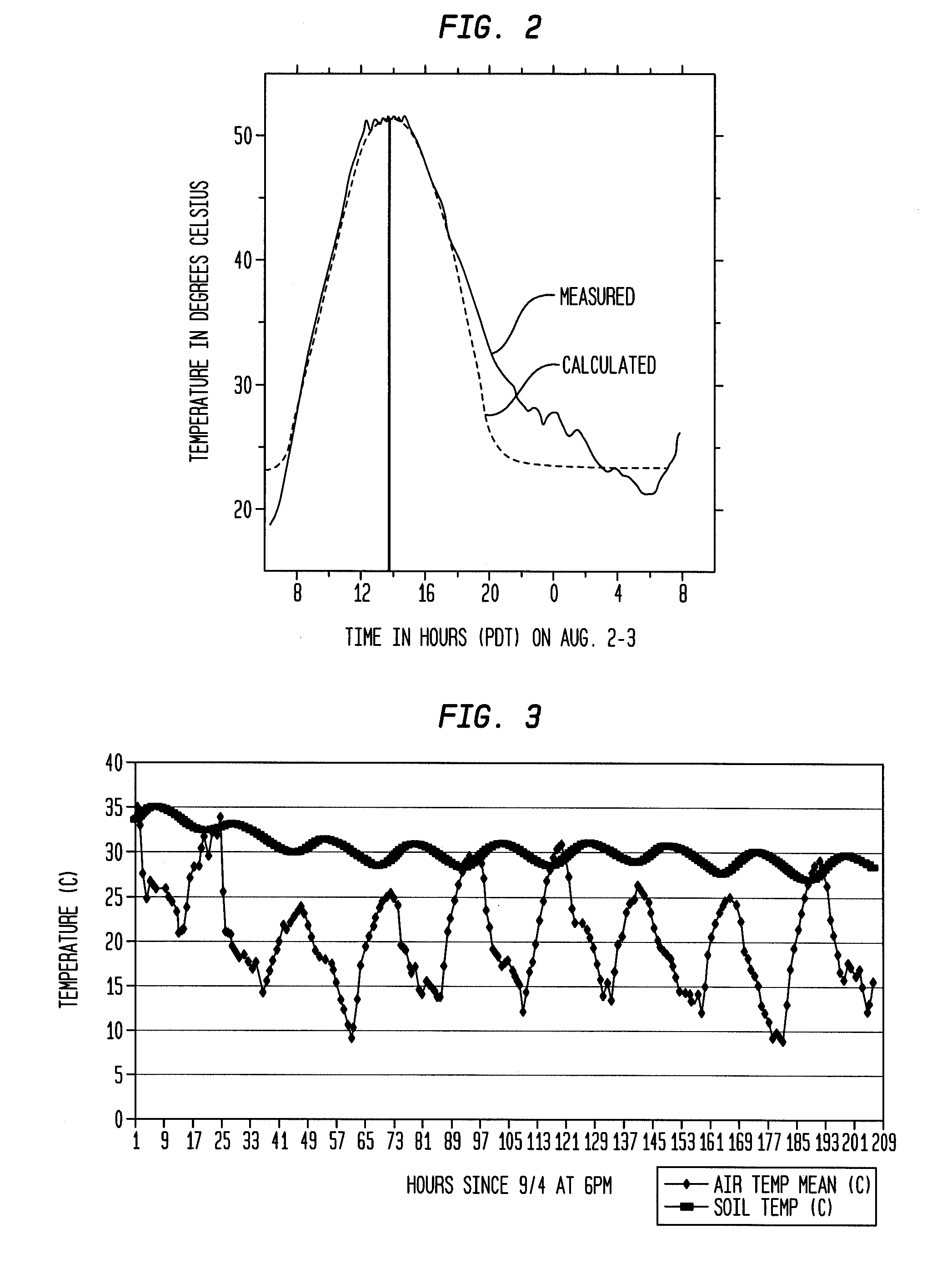Temporal thermal imaging method for detecting subsurface objects and voids
a technology of subsurface objects and thermal imaging, applied in the field of temporal thermal imaging methods for detecting subsurface objects and voids, can solve the problems of emissivity-related noise, typically 1 or 2 degree ° c., and the conventional single-band thermal imaging is difficult to interpret, so as to achieve the effect of effectively removing background clutter and enhancing the detection of thermal inertia outliers
- Summary
- Abstract
- Description
- Claims
- Application Information
AI Technical Summary
Benefits of technology
Problems solved by technology
Method used
Image
Examples
Embodiment Construction
[0062]In describing the preferred embodiments of the invention illustrated in the drawings, specific terminology will be used for the sake of clarity. However, the invention is not intended to be limited to the specific terms so selected, and it is to be understood that each specific term includes all technical equivalents that operate in a similar manner to accomplish a similar purpose.
[0063]Thermal inertia (effusivity) change detection can be used to find less solid and less dense underground object locations, such as subsurface explosive devices, underground tunnels and caves, and other structures and sites such as underground pipes, or other objects, i.e., an artifact amidst clutter and the surrounding host materials such as natural earth materials, paved roads or bodies of water. It can also be used to locate and quantify the size and extent of delaminations within paved bridges, highways and landing strips and material-loss thinning within coated or covered pipelines and aircr...
PUM
| Property | Measurement | Unit |
|---|---|---|
| wavelength | aaaaa | aaaaa |
| wavelength | aaaaa | aaaaa |
| apparent temperature | aaaaa | aaaaa |
Abstract
Description
Claims
Application Information
 Login to View More
Login to View More - R&D
- Intellectual Property
- Life Sciences
- Materials
- Tech Scout
- Unparalleled Data Quality
- Higher Quality Content
- 60% Fewer Hallucinations
Browse by: Latest US Patents, China's latest patents, Technical Efficacy Thesaurus, Application Domain, Technology Topic, Popular Technical Reports.
© 2025 PatSnap. All rights reserved.Legal|Privacy policy|Modern Slavery Act Transparency Statement|Sitemap|About US| Contact US: help@patsnap.com



